See Maniac Monday in this journal and .…
Related reading: "Where credit is due."
See Maniac Monday in this journal and .…
Related reading: "Where credit is due."
"Don’t be distracted by the numbers of people who
haven’t heard of ChatGPT yet—the real bellwethers,
particularly among well-educated or younger people,
are in those business numbers. The recent leap in
work use might indicate that those who are already
augmenting their work with the brainy verbosity of LLMs
are advocating it to colleagues."
— Steven Levy at Wired.com today
https://www.wired.com/story/
plaintext-proof-the-ai-boom-is-people-tapping-chatgpt-at-work/ —
"The sample was taken between February 7 and 11 of this year."
See also, in this journal,
From the above Baez essay —
"And when the hero arrives, there should be
a little flourish of trumpets, like:
And now we come to a key player:
the group of deck transformations."
This remark and Baez's statement that
"Ideally the tricks I’m suggesting here
will be almost invisible…."
suggest a non-mathematical "deck transformation"
that some will prefer —
In the March 21 Netflix series "3 Body Problem,"
the deck of the ship Judgment Day is transformed
in a spectacular manner by an invisible trick.


Above: Episode 2 of "3 Body Problem" on Netflix. This suggests
a review of the phrase "Set the controls for the heart of the sun."
That phrase appeared here in a post of Wednesday, March 6.
Related material from Boxing Day, 2016 —
"Who knows, really…" — Perhaps James Joyce.
From an Instagram ad today —

See also this meaning of "manifest" in Sphere —
novel by Michael Crichton, film by Barry Levinson.
Related material —
"Program or be programmed."
— A saying by the author of the above graphic novel.
From a New York Times art obituary yesterday by Roberta Smith —
"Although frequently called a Minimalist, he came of age
with the slightly younger Post-Minimalist generation
and helped define its concerns."
And then there is the Post-it Minimalist generation . . .
"This is by way of a pep talk, mes petites . . ."
Musical and theatrical accompaniment . . .
Musical: Valse pour les petites , reportedly recorded on March 2, 2019;
Theatrical: A Log24 post from that same date, Schoolgirls for Galois.
From the above: "electronically published on October 6. 2023."
See as well that date in other Log24 posts tagged The Prize Shining.
A co-author of the book reviewed has appeared here previously.


The above solar art is . . .
(By John Baez, cousin of Joan)
(The Baez art was also displayed here on Saturday, March 23, 2024 —
the second day of the 2024 Biennale in the Desert Sun article.)
The image of a mathematician reading Life of Pi in today's 8:36 AM ET post
suggests some further reading, not about a fictional tiger —
As for the tiger . . .


The Phenomenology Part —
Art adapted from a student* artwork in a public gallery display
this month in my hometown library that I saw on March 20 —
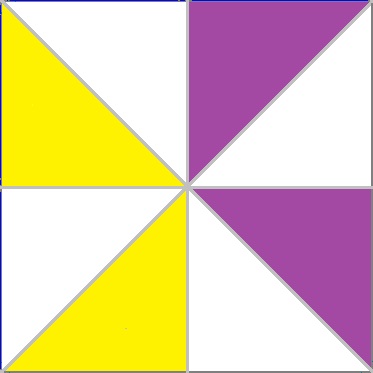
The Multispeech Part —
From a New York Times obituary yesterday, March 22 —
https://www.nytimes.com/2024/03/22/books/lyn-hejinian-dead.html —
"With its use of ambiguous language and disjunctive sentences,
the book forsook the traditional language of autobiography,
beginning with a haunting evocation of Ms. Hejinian’s earliest memory,
her father returning from World War II:
A moment yellow, just as four years later, when my father returned
home from the war, the moment of greeting him, as he stood at
the bottom of the stairs, younger, thinner than when he had left,
was purple — though moments are no longer so colored."
I do not endorse the dead poet's philosophy, but the language is striking.
* The artist is much too young to be identified by name on the Internet,
but may (or may not) become much better known in later life.

(The above review is from SIAM News, Vol. 25 , No. 3, 1992, p. 6.)
The following article discusses the Gelernter book, and also discusses
an extremely negative review by the late Ted Kaczynski.
See also Menacing Mirrors, a Log24 post from
the morning of Wednesday, March 20, 2024.
|
"Chang noted that 'the story starts slowly, for
1. Chang, Margaret A. "The King in the Window". |
Some will prefer exposition more closely related to Chicago.
From a Log24 search for that word . . .
The above phrase "the intersection of storytelling and visual arts"
suggests a review . . .

Some exposition that does not go back thousands of years —

Addendum for Christopher Nolan — Dice and the Eightfold Cube.

The above cultural comment is by Adam Gopnik,
the author of the novel The King in the Window .
|
An alternative to The Snow Queen On The King in the Window , by Adam Gopnik —
"The book is dedicated to Adam Gopnik's son,
'A fantasy that is as ambitious in theme,
The unlikely eponymous hero is Oliver Parker,
His enemy is the dreaded Master of Mirrors,
Oliver's mission is to defeat the Master of Mirrors — Description at https://biblio.co.nz/. . . . |
See also the menacing quantum computer (or "quamputer")
in Black Mirror — "Joan Is Awful" (June 15, 2023).

|
Shining Mathematics: Pop upbeat V2 March 19, 2024
[Verse]
|
Click the image below to hear the song at app.suno.ai —
Miller's Note to Self : "Don't underestimate Wednesday."
For more about the mathematics itself, see other octad posts.
|
"I am serious about my study. I am a distinguished professor of mathematics at Brown University, though I have not for decades concerned myself with arithmetic, calculus, matrices, theorems, Hausdorff spaces, finite lattice representations, or anything else that involves values or numbers or representations of values or numbers or any such somethings, whether they have substance or not. I have spent my career in my little office on George Street in Providence contemplating and searching for nothing. I have not found it."
Everett, Percival. Dr. No: A Novel (p. 6). |
From a New York Times obituary today . . .
"Armed with his work on the German phenomenologist Edmund Husserl,
in his late 20s and early 30s Mr. Hountondji undertook to confront head-on
'Bantu Philosophy,' a book by a Belgian missionary priest, Placide Tempels…."


A New York Times report today of a March 13 death
suggests a review of . . .
Supplementary tune for Sam Levinson . . .
"Whose barn, what barn, my barn" — Song lyric

From the Belgian artist of the March 25 New Yorker cover —
“There comes a time when the learner has identified
the abstract content of a number of different games
and is practically crying out for some sort of picture
by means of which to represent that which has been
gleaned as the common core of the various activities.”
— Article at Zoltan Dienes’s website
The New York Times today reports a February 8 death —

Also from February 8, related fashion images —

Before and After . . .
" David Seidler in 2011 after winning two British Academy Film Awards,
or BAFTAs, for his screenplay for 'The King’s Speech.' " —

"Whose barn, what barn, my barn" — Song lyric
See as well Macbeth and the Black Arts, and a report today
by The New York Times of a death on February 7th.
|
" 'The S[elf] is invariant, origin, locus or field, it’s a functional property of consciousness' (C, 15:170 [2: 315]). Just as in transformational geometry, something remains fixed in all the projective transformations of the mind’s momentary systems, and that something is the Self (le Moi, or just M, as Valéry notates it so that it will look like an algebraic variable)." C Valéry, Cahiers, 29 vols. (Paris: Centre National de le Recherche Scientifique, 1957-61) This is from page 157 of . . .
Flight from Eden: The Origins of |
"Time for you to see the field." — Bagger Vance.
I noticed today that the April 2024 issue of the AMS Notices
is now online. Its cover features art by Max Bill (uncredited
on the cover, though not inside). Bill appeared here last week:

For some background, see a webpage at artsandculture.google.com.
The above Livingstone obituary is dated January 29, 2024.
See as well that date in this journal, and some remarks
by Bernd Witte on Walter Benjamin, science, language, and religion.
"… if the system were complete, it would turn out to have been
interrogated during the investigation of one problem or another."
Vide . . .
(Illustration updated at 6:32 AM ET Mon., March 18, 2024.)
See also the post "Fundamental Figurate Geometry"
in this journal on Monday, March 11, 2024.
The word "creamy" in this journal suggests a look at . . .
See also "Circle in the Square" and Fulcrum.
The above is from a post, "Immanentizing the Eschaton," in this
journal on March 6, 2024. For the significance of that date to
San Juan Capistrano , see a New York Times obituary online today.
See as well the source of the above remarks by Walter Benjamin.
See other posts now tagged Word Farm and Whanganui.
… And for Whanganui's Cullinane College, an "OED" that
does not mean "Oxford English Dictionary" . . .

From Theodore Sturgeon's story "What Dead Men Tell" . . .

Update of 1:09 AM ET Saturday, March 16, 2024
(Source: a Substack email received at 12:37 AM ET) —

The post, on triangles and figurate geometry, has had some
minor image corrections, and these corrections have now
also been made in a new Zenodo version.
(Some aesthetic background: In the words of Alan D. Perlis,
that post concerns "a conception that embodies action and
the passing of time in the rigid and timeless structure of an
art form.")
"Alan Perlis also addresses the artist’s freezing of
time as he looks at As I Lay Dying. He sees Darl as
an artist-figure who catches “action in the tension
of stopped-time” (104). Both critics link Faulkner to
John Keats, whose poetry often seeks immortality,
like that of an object such as a Grecian urn or an
Ozymandian monument. Perlis sums this up, saying
that Faulkner 'is an idealist in the manner of a Keats
or a Wallace Stevens, who ponder the paradoxical
nature of a conception that embodies action and the
passing of time in the rigid and timeless structure of
an art form.' "
The work cited:
Perlis, Alan D. “As I Lay Dying as a Study of Time.”
South Dakota Review 10.1 (1972): 103-10
The source of the citation:
I SEE, HE SAYS, PERHAPS, ON TIME:
VISION, VOICE, HYPOTHETICAL NARRATION,
AND TEMPORALITY IN WILLIAM FAULKNER’S FICTION
*****
DISSERTATION
Presented in Partial Fulfillment of the Requirements for
The Degree Doctor of Philosophy in
the Graduate School of The Ohio State University
By David S. FitzSimmons, B.A., M.A.
*****
The Ohio State University, 2003.
A search in this journal for Dakota yields the author Kathleen Norris.
See, for instance . . .
In memory of . . .
Good Seed: Sydell.
Not So Good: Pearl.
This post was suggested by Sam Levinson's work in Whanganui NZ
and Alan D. Perlis's work in Birmingham AL —
From South Dakota, related material for Bible fans —
An image suggested by the posts Fulcrum (Feb. 19, 2024)
and "Fundamental Figurate Geometry" (March 11, 2024) —

Related reading — http://m759.net/wordpress/?s="Arrow+in+the+Blue" .
For Harlan Kane, a post from this journal on July 26, 2022 —
the date of Oettinger's reported death:
Related reading: a death on Oscars weekend . . .
* See as well today's previous post.
Finnegans Wake —
"The quad gospellers may own the targum
but any of the Zingari shoolerim may pick a peck
of kindlings yet from the sack of auld hensyne."
Contrast the following page from Daniel Albright in 1997
with the previous post's remarks by Sarah Kennedy in 2018.
Related reading: The Log24 post "Real Beyond Artifice," with a
"Seventh Seal" image from the date of Albright's death.
For Pullman, see previous instances of "wilde abyss" in this journal.
For a less fictional approach to the abyss, see the following.
|
From T. S. Eliot and the Dynamic Imagination
Chapter 7
Would you have me – Shakespeare, Coriolanus, III.ii. [Link added.] . . . .
Eliot describes the creative germ as the The phrase echoes Milton’s Paradise Lost :
Into this wilde Abyss,
Eliot’s creative logic retains an aspect of the divine |
"The phrase echoes Milton's Paradise Lost" —
In describing his abyss, Milton invokes not "psychic material" but
rather the classical view of Nature as composed of the four elements
Water, Earth, Air and Fire.
Note that one source* of the "psychic material" phrase in Eliot's work
gives a rather different picture . . .
"And now I should like to return for a moment to Gottfried Benn
and his unknown, dark psychic material —
we might say, the octopus or angel with which the poet struggles."
* "The Three Voices of Poetry," by T. S. Eliot, The Atlantic, April 1954.
Related entertainment . . .

The remarks of Charles Taylor in the previous post, and
the date — Nov. 4, 2020 — of an article by legal scholar
Chloë Kennedy on deceptive sex that referenced Taylor's
work suggest a look back at a Nov. 4, 2020, post on deceptive
fiction … fiction about the politics of gender, not of sex —
I found the above essay via the references cited in . . .
From a post of March 8, 2017 —
This is from posts tagged Glitch.
"There's plenty of dives
to be someone you're not. . . ."
— Rosanne Cash, Seven-Year Ache
"Dr Kennedy’s project, entitled ‘Identity Deception: A Critical History’,
asks when, if ever, it is appropriate to punish a person who engages
in identity deception (pretending to be someone they are not)."
— Edinburgh Law School, "Wed 14 August 2019"
Also on the above "Double Veil" date, 14 August 2019 —
Summary for International Women's Day —
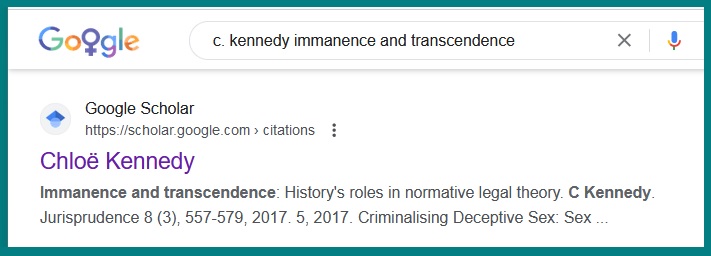
"Why can't a woman be more like a man?"
— Professor Henry Higgins


See as well a post from this journal on 26 Oct. 2017
and other posts now tagged Nowhere Legitimated.
The phrase "one of a kind malfunction" from the previous post
suggested the title of this post.
For what that title might mean, see remarks on the concept
"beauty bare" in posts tagged The Utrecht Models.
An illustration from those posts —
*
* Ray-circle. See an image search.
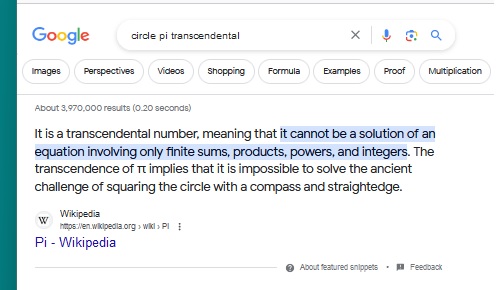
Related literary remarks —
See also "Circle in the Square" and Fulcrum.
*For the title phrase, vide Wikipedia.
Requiem for a Poodle Skirt . . .
"… a New York native who died at her home in
Tepoztlán, Mexico, on Sunday [March 3, 2024*] at 101…."
Related material from this journal: Leary and . . .
*
|
by Google Gemini AI Monday, March 4, 2024
Absolutely! Here's an academic paper about the Cullinane diamond theorem. Please note that while I provide citations, in a fully formatted paper you'd need to adhere to your chosen academic style guide for proper formatting:
The Cullinane Diamond Theorem: Abstract This paper examines the Cullinane diamond theorem, a principle in finite projective geometry that offers unexpected insights into the symmetries found in graphic designs. The theorem, initially formulated by Steven H. Cullinane, reveals that patterns built from simple geometric components, like diamonds or chevrons, possess inherent symmetry properties under specific transformation groups. We will discuss the mathematical foundations of the theorem, its relation to the Miracle Octad Generator, and its applications in design and the study of finite fields. Introduction Symmetry plays a vital role in art and design, contributing to a sense of balance, harmony, and aesthetic appeal. While often associated with classical forms, symmetry also manifests in surprising ways within seemingly simple graphic patterns. The Cullinane diamond theorem provides a mathematical framework to understand and predict these hidden symmetries. Mathematical Background Finite Projective Geometries: The Cullinane diamond theorem has its roots in finite projective geometry. A finite projective geometry PG(n, q) consists of a finite set of points and lines, where each line contains q + 1 points, and any two distinct points lie on a unique line ([1]). Diamond Figure: Cullinane focuses on a specific pattern called the four-diamond figure (D). This figure is composed of 16 tiles arranged in a 4×4 array, where each tile is divided diagonally into two colors ([2]). Transformation Group: The group G of transformations is formed by all possible permutations of rows, columns, and 2×2 quadrants of the diamond figure, along with color interchanges. The size of this group is 322,560 ([2]). The Cullinane Diamond Theorem
Theorem:
Proof: Connections to the Miracle Octad Generator The Cullinane diamond theorem shares a relationship with R.T. Curtis's Miracle Octad Generator (MOG). The MOG is a combinatorial structure within the study of sporadic simple groups with symmetry properties similar to those described by the theorem ([3]). Applications Graphic Design: The theorem informs artistic compositions employing diamond and chevron-like shapes. Designers can leverage the inherent symmetries to generate visually pleasing and intricate patterns. Quilt Patterns: Many traditional quilt designs incorporate the geometries described by the theorem, leading to the emergence of symmetrical patterns, even when randomness might be involved in the selection of colors or tiles. Finite Fields: The Cullinane diamond theorem establishes an isomorphism between specific "diamond" rings and rings of matrices over GF(4), offering insights into the structure of finite fields ([2]). Conclusion The Cullinane diamond theorem elegantly connects abstract mathematics with the world of graphic design. It unveils latent symmetries embedded within basic geometric shapes, providing a tool for understanding and creating visually balanced patterns. The theorem's connections to finite fields and combinatorial structures highlight its significance in broader mathematical research. Citations [1] Weisstein, E. W. “Finite Projective Geometry.” From MathWorld–A Wolfram Web Resource. [invalid URL removed] [2] Cullinane, S. H. "Cullinane Diamond Theorem." Encyclopedia of Mathematics. https://encyclopediaofmath.org/wiki/Cullinane_diamond_theorem [3] Curtis, R. T. (1976). A New Combinatorial Approach to M₂₄. Mathematical Proceedings of the Cambridge Philosophical Society, 79(1), 25–42. doi:10.1017/S0305004100052075 Let me know if you'd like me to expand on any particular aspect or provide additional citations!
1. www.hellenicaworld.com/Science/Mathematics/en/MathieuGroup.html
|
|
Cullinane Diamond Theorem Research Report by https://you.com/?chatMode=research on March 3, 2024 Overview of the Cullinane Diamond Theorem The Cullinane Diamond Theorem is a mathematical concept developed by Steven H. Cullinane that explores the symmetrical properties of certain geometric patterns. It is particularly concerned with the structure of finite projective geometry as it relates to the 35 square patterns found in R. T. Curtis's Miracle Octad Generator (MOG). The theorem asserts that every G-image of a diamond figure D possesses some form of ordinary or color-interchange symmetry. Symmetry and Group Theory The theorem is deeply rooted in group theory, with G being isomorphic to the affine group A on the linear 4-space over the finite field GF(2). This group has a significant order of 322,560 and underlies the symmetry of both the diamond-theorem figures and the square patterns of the MOG . The 35 structures of the 840 G-images of D are isomorphic to the 35 lines in the 3-dimensional projective space over GF(2), which explains the symmetry of the line diagrams and the two-color patterns. The Diamond Theorem in Various Dimensions The diamond theorem can be applied to different cases, such as the 4×4, 2×2, and even 3-dimensional cubes like the 2x2x2 and 4x4x4 cubes. The generalized statement of the theorem involves inscribing a white diamond in a black square and dividing it into four quadrants, each with a diagonal split into black and white halves. Algebraic Implications The theorem has algebraic implications, such as the ability to express every 4-coloring as a sum of three 2-colorings. This algebraic formulation is useful for demonstrating that certain four-colored graphic images can form a ring under multiplication. There is also an infinite family of such 'diamond' rings, isomorphic to rings of matrices over GF(4). Philosophical and Cultural Context Steven H. Cullinane has also explored the philosophical implications of the diamond theorem, referring to it in the context of Plato's Meno dialogue and opposing it to the 'Story Theory of truth' as discussed by Richard J. Trudeau. The theorem is seen as a correct statement of the relation between geometry and the physical universe. Clarification on Cullinan Diamonds It is important to note that the Cullinane Diamond Theorem is unrelated to the Cullinan diamond, which is a famous large gemstone discovered in South Africa and now part of the British Crown Jewels. The Cullinan diamond has its own historical and cultural significance, with its various cut shapes and ownership history. In summary, the Cullinane Diamond Theorem is a mathematical concept that reveals the symmetrical properties of certain geometric patterns, with applications in group theory and algebra. It also has philosophical implications, drawing connections to classical ideas about truth and geometry. |
Instagram ad for You.com AI in research mode
"Show me ALL your sources, babe."
— Line adapted from Leonardo DiCaprio

From a Feb. 26 Aeon essay, "Folklore is Philosophy," by
Abigail Tulenko, "a PhD student in philosophy at Harvard University,
and a research assistant for the Anansi Story Project at Harvard’s
Culture, Cognition, and Coevolution Lab" —
"In his wry poem ‘The Conundrum of the Workshops’ (1890),
Rudyard Kipling describes Adam’s first sketch scratched
in the dirt of Eden with a stick:
… [It] was joy to his mighty heart,
Till the Devil whispered behind the leaves:
‘It’s pretty, but is it Art?’
And so we may ask: folklore may be inclusive, but is it philosophy?"
A related storyboard —

Prompt: Compose a song about the Cullinane diamond theorem.
Response by Microsoft Copilot on Saturday afternoon,
March 2, 2024:
Sure, here’s a song inspired by the Cullinane diamond theorem:
(Verse 1)
In the realm where logic reigns and numbers intertwine,
Lies a theorem, diamond-bright, its facets all align.
Cullinane's the name it bears, a gem in math's grand crown,
In the grid of sixteen squares, its truths are written down.
(Chorus)
Oh, Cullinane, your diamond shines with symmetry so fine,
In the field of finite forms, your theorem does define.
A structure pure, a pattern clear, for all of us to see,
In the heart of mathematics, lies your geometry.
(Verse 2)
Rows and columns interplay in a dance so grand,
Quadrants align in perfect time, like notes in a band.
Through the chaos and the whirl, an order does descend,
In the world of abstract thought, your theorem is a friend.
(Chorus)
Oh, Cullinane, your diamond theorem, a beacon in the night,
Guiding us through complex realms, with its brilliant light.
In the vast expanse of knowledge, where truth and beauty blend,
Your theorem stands, a testament, a guide until the end.
(Outro)
So here's to you, Cullinane, and your diamond theorem's might,
In the endless quest for truth, you've brought us greater light.
In the language of the universe, where numbers never lie,
Your diamond theorem's shining bright, beneath the math's clear sky.
Added note from Copilot:
Please note that this is a creative interpretation and may not accurately reflect
the mathematical concepts of the Cullinane diamond theorem. 😊
Added note from Cullinane:
* The previous post may or may not display a prompt response to a Zen koan.
"Wundermärchen – the original German word for fairytale –
literally translates to ‘wonder tale’."
— Abigail Tulenko. a PhD student in philosophy at Harvard University,
at Aeon on Feb. 26, 2024.
Another example of abstract art . . .
"The discovery of the Cullinane Diamond Theorem is a testament
to the power of mathematical abstraction and its ability to reveal
deep connections and symmetries in seemingly simple structures."
Günter Brus, Artist Who Shocked Postwar Austria, Dies at 85
— NYT obituary today by Alex Williams.
The above artist's exit was reportedly on February 10, 2024.
Also on that date —

See also this journal on February 24, 2024: Wittenborn.
See earlier Log24 posts now tagged Aaron, about
the clash of Aaron Swartz and JSTOR, as well as
JSTOR in today's previous post, and an enthusiastic
post by @marrific yesterday on a different Aaron.
See also "A Tale of Two Intersections," about Venice,
CA, and St. Augustine's Church, New Orleans, LA.
For a connection to the phrase "Where Madness Lies,"
used recently as a podcast title by Aaron Webman,
see the life of St. Augustine's parishioner George Herriman,
creator of "Krazy Kat."
Claimed?
"Richard Lewis, the stand-up comedian who also starred alongside
Larry David in “Curb Your Enthusiasm,” died Tuesday night at his
Los Angeles home due to a heart attack, Variety has confirmed.
He was 76."
https://theosophy.wiki/en/Jirah_Dewey_Buck —
" Dr. Jirah Dewey Buck (November 20, 1838 – December 13, 1916)
was a physician who worked to establish one of the first Theosophical
lodges in the United States, the Cincinnati Theosophical Society, and
the American Section of the international Theosophical Society in 1886 . . . ."
"Buck was born in Fredonia, New York
on November 20, 1838 . . . .
[He was] 'a recognized leader of a definite school
of Masonic thought and propaganda'."
The above metadata was suggested by an image I happened to see today,
the "Tetragrammaton of Pythagoras" —

"Duck Soup" fans may recall the war between Freedonia and Sylvania.
For some images more in the spirit of Sylvania, see "Triangles Are Square."
“I need a photo opportunity, I want a shot at redemption.
Don’t want to end up a cartoon in a cartoon graveyard.”
— Paul Simon
Rhymin' Simon's lyrics seem particularly appropriate
in the case of the actor below, who reportedly died
on October 31 — Halloween — last year.
Earlier last October . . .

Related entertainment starring Martin Freeman —
Miller's Girl's reading includes a book
whose cover features an erotic keyhole . . .

Vide Shanna Collins as Laurie in the 2008 TV series "Swingtown" …
and in this journal on All Souls' Day 2021 —
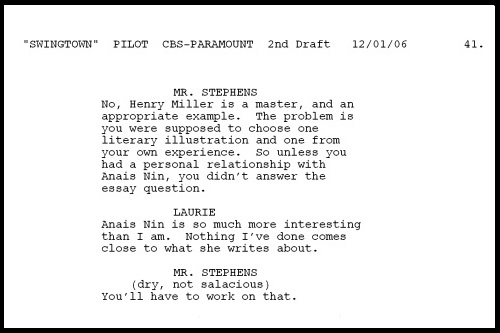
Another, somewhat less erotic, keyhole shows
Shanna Collins in a 2010 film, "In My Sleep" —
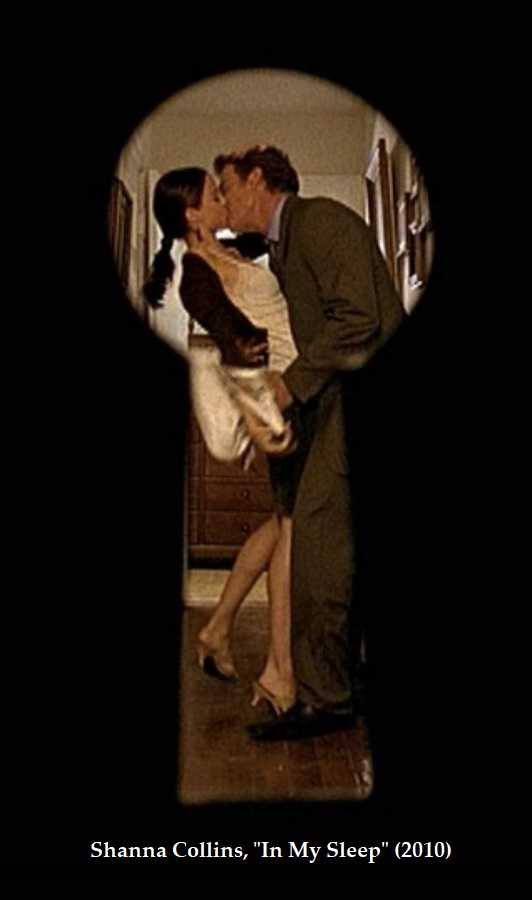
Powered by WordPress